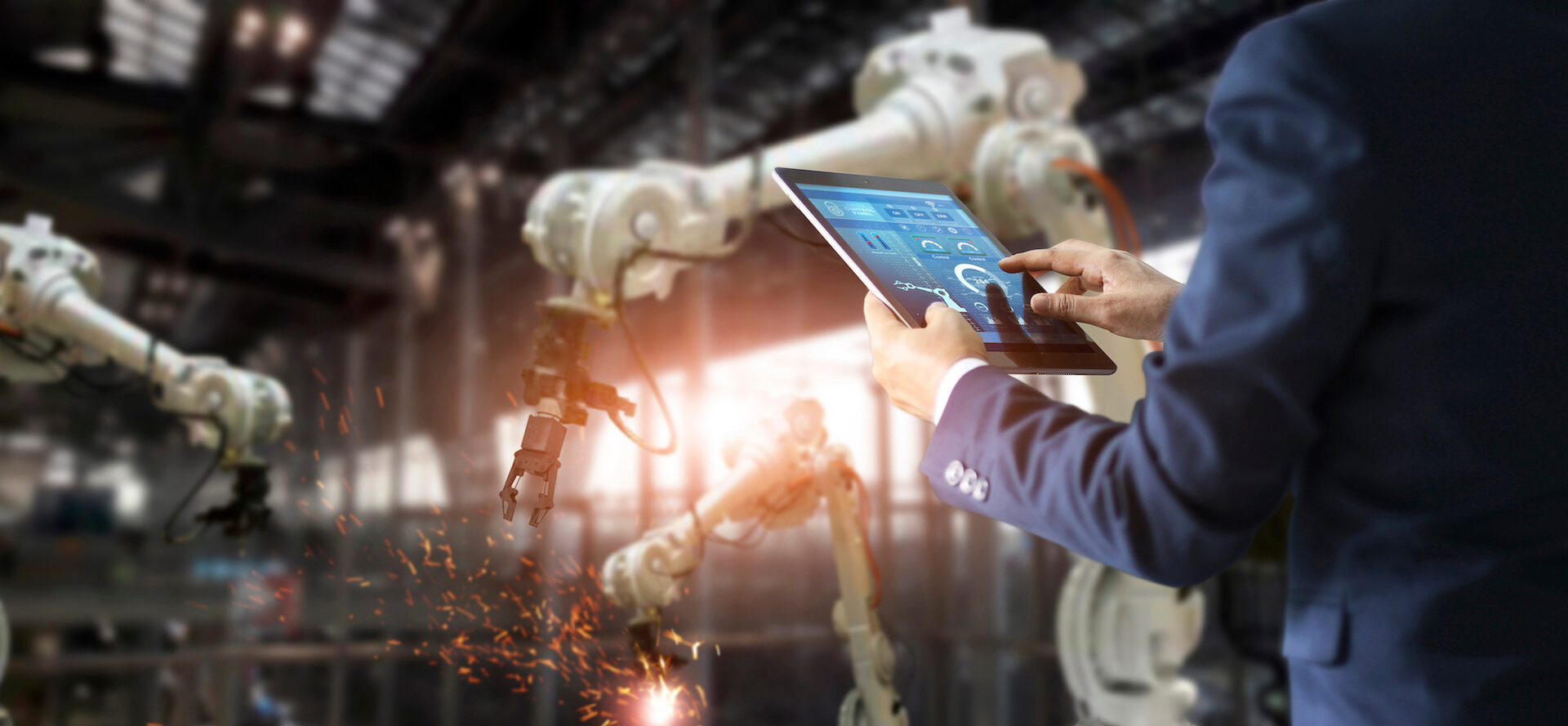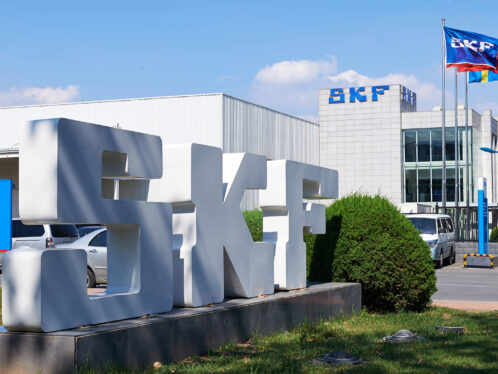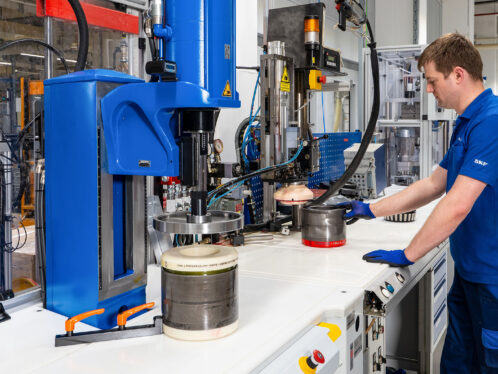
Trends in design and implementation
“Engineers even have a term for that,” says Paul Teague, an editor with Design News, a trade journal. “They call it ‘throwing it over the wall.’ The design engineers would first come up with a design and throw it over the wall to the manufacturing engineers. They would say, ‘We can’t make this,’ and toss it back over the wall. That’s because in the old days, design engineers didn’t have responsibility for making sure their designs could be built. They just wanted to design a really cool product.”
Digital design, concurrent engineering and product life-cycle management contribute to speed up production and save costs.
Once upon a time, design engineers would sit down at a drafting table and sketch a design for a product. A group of manufacturing engineers would examine the design and say, “Can we build this or not?” Then they would go back to the design engineers and tell them what to change in order to make the product. The design would enter the manufacturing process, and from that point on the design engineers were completely out of the loop.
“Engineers even have a term for that,” says Paul Teague, an editor with Design News, a trade journal. “They call it ‘throwing it over the wall.’ The design engineers would first come up with a design and throw it over the wall to the manufacturing engineers. They would say, ‘We can’t make this,’ and toss it back over the wall. That’s because in the old days, design engineers didn’t have responsibility for making sure their designs could be built. They just wanted to design a really cool product.”
Concurrent and collaborative
How times have changed. Thanks to new trends and practices such as concurrent engineering, collaborative engineering and product life-cycle management, design engineers work in tandem not only with manufacturing engineers but also with marketing and purchasing colleagues and suppliers and customers. And with the growing ease of digital design and advanced electronic communication, this process frequently occurs in “real time,” no matter where the individuals are located.
“What used to be a serial process where each person in the chain would do his part of the work and pass it down to the next person now has to happen all at the same time,” says Joe Gavaghan, director of public relations for US-based Parametric Technology Corporation (PTC), a leading manufacturer of software solutions for product development and product life-cycle management. “It takes a rich collaborative environment to be able to do that.”
This sea change in how products are designed reflects several trends. Fierce competition is making faster time to market an imperative in the business world. Industry today is also increasingly global, due to the growing number of companies that are globally outsourcing the majority of their manufacturing in order to exploit economic benefits and remain competitive. This trend, in turn, has fed another trend: a growing demand for collaboration across a number of different organisations, not only in the manufacturing of products but also in the essential design of those products.
Concurrent engineering and collaborative engineering go hand in hand. The former can be described as a systematic approach to the integrated, concurrent design of products and their related processes, including manufacture and support. The idea is at the outset to get the developer or the designer of the product to consider all the elements of the product life cycle from concept through disposal, including quality control, cost, scheduling and user requirements.
Concurrent engineering would not be possible without collaborative workspaces, in which all the participants in the product life cycle (design, marketing, sales, manufacturing, original equipment manufacturers, suppliers and customers) can access and interact with each other’s designs in progress. They need to do this instantaneously to save time, money and effort. This is enabled by software that allows a complete digital representation of a product.
“The idea that a product exists entirely in digital form, stored in computers and shared across [networks] through the Internet, is making this kind of collaboration possible,” says Gavaghan.
Human factor
While a growing number of companies are offering software to help make this possible, it is the human factor that is truly decisive in making this new collaborative
environment a success.
“One of the biggest challenges is not in the technology, but in the changes to the way people work,” says Gavaghan. “We do things a certain way and become very proficient at it. For collaborative engineering to be successful, you need to make sure people have training and the support they need to change the way they work.”
The IMPACT Lab at the University of Southern California’s School of Engineering is training a new generation of engineers not only to collaborate, but also to negotiate with the many “stakeholders” in the evolution of a product. IMPACT stands for “improve manufacturing productivity with advanced collaboration technology.”
“Engineering has traditionally been viewed as an applied science,” says Stephen Lu, who holds the David Packard Chair in Manufacturing Engineering and is a professor of aerospace engineering, industrial and systems engineering and computer science at the University of Southern California. “Engineers would think, ‘As long as we’ve applied our science, we’ve done our job.’ But today there are many more stakeholders in the product you are designing, not just the customer, but government agencies, environmental and safety officials, etc.”
Engineers have long considered technical factors in their work. Now, increasingly, they are paying attention to economic factors. But attention to social factors, the non-technical considerations of a product’s design, has been slow in coming, says Lu.
“In Stockholm and in Tokyo, Newton’s law works the same, so why is it that a Volvo looks so different from a Toyota?” Lu asks. “Because of the many non-technical factors that come from different stakeholders. Today design engineers must look at the market dynamics of the products they want to sell.”
Numerous benefits
There are many benefits of concurrent engineering, enhanced by collaborative environments and attention to product life-cycle management. Products come to market much, much faster, says Gavaghan. He gives as an example one of PTC’s customers, United Defense, a manufacturer of military equipment. A piece of equipment that took four years to develop in the first generation took just eight months in the second generation, thanks to engineering collaboration.
Another customer, Hewlett-Packard’s Imaging and Printing Group (IPG), which makes inkjet printers, laser printers and scanners, needed to introduce engineering collaboration and product life-cycle management because of its extensive use of third-party design partners and the outsourcing of most of its manufacturing. Myriad autonomous design centres, often outside IPG’s direct control, had evolved disparate sets of procedures. Through software-enhanced collaboration, changes to procedures and technologies became a minute-long rather than a daylong process. This and other innovations brought substantial savings in product development costs.
For the automotive industry, outsourcing is just as prevalent as in the electronics field, making collaboration essential.
“For the major automotive manufacturers today, their job is more of a systems integrator than an original equipment manufacturer,” says Gavaghan. “Nearly all the major components of a vehicle are designed by groups of different companies, who deliver the finished components to the manufacturer. Their job is to snap them into place.”
In addition to the enormous number of players in the design of a car, there is the constant pressure to reduce the amount of time it takes to bring a vehicle to market. The faster and more effectively the design process works, aided by collaboration, the greater the chance the manufacturer can get a product to market that is timely and in tune with the trends of the day.
“Engineering today is more than ever before a team process,” says Teague of Design News. “When teams of engineers work concurrently on a virtual design, where nothing is built until everyone in the process is satisfied, there are no surprises. And when unwelcome surprises can cost manufacturers millions of dollars, that’s definitely a step in the right direction.”




